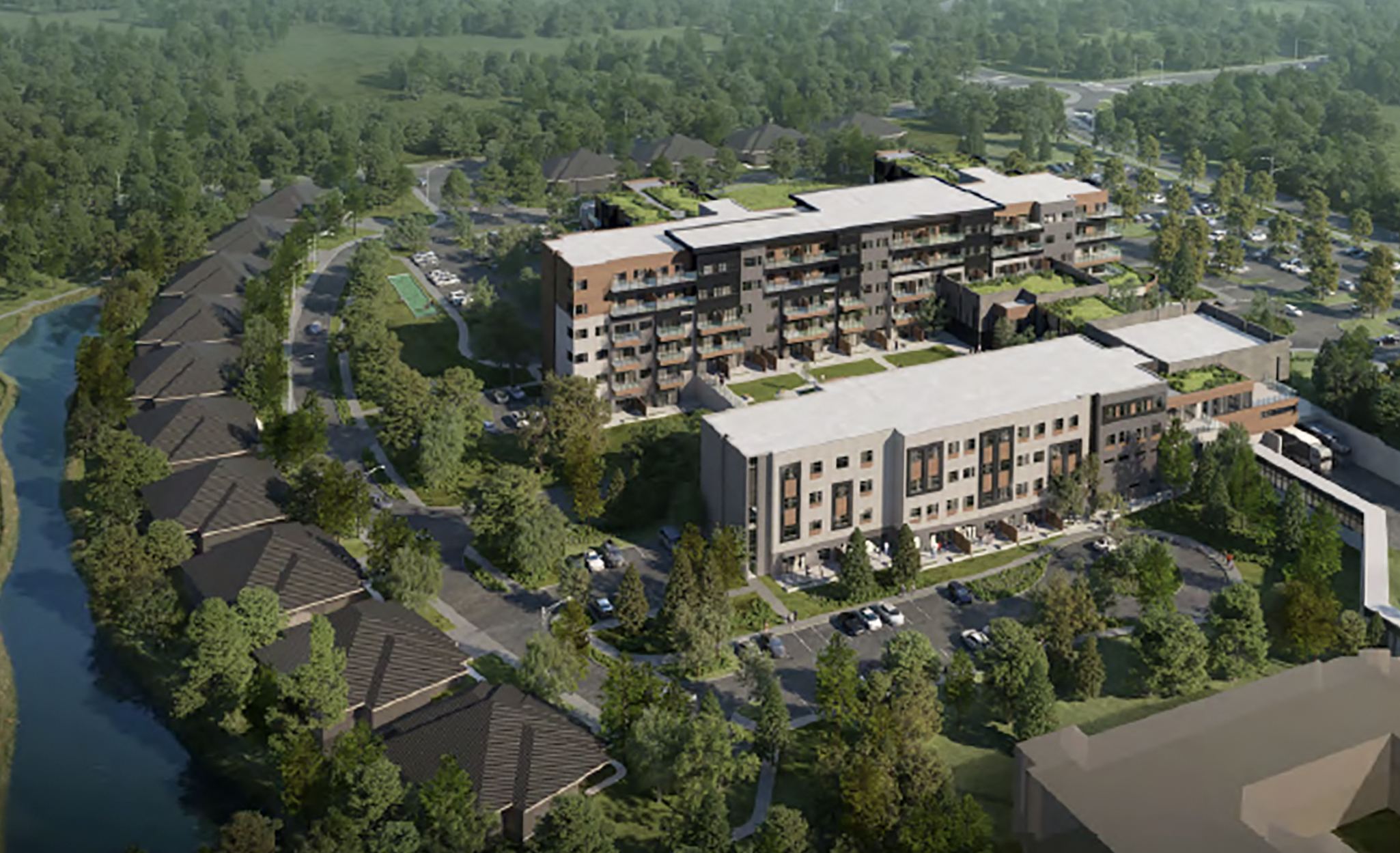GUELPH – Wellington County will apply for additional federal and provincial funding and reach out to local legislators for support for the proposed Continuum of Care project.
In an 11-4 recorded vote at an Oct. 29 special meeting, council approved an information, heritage and seniors committee recommendation stating that:
- the Continuum of Care Concept Plan as presented by Gerry Pilon of Salter Pilon Architecture be endorsed as the model for seniors’ focused residential development at Wellington Place;
- staff are directed to make application to appropriate federal and/or provincial funding programs to find sufficient funds to bring the operating budget to break-even;
- the warden and information, heritage and seniors committee chair enlist the support of local MPs and MPPs when making approaches to federal and provincial officials; and
- staff report progress and receive additional direction for any further action on the project to the committee and county council at monthly meetings.
The project is envisioned as a 254-unit supportive seniors community development on a 15-acre parcel of land at the 209-acre Wellington Place campus in Aboyne.
It has been under discussion since February of 2018, when council authorized a feasibility study on the project.
The complex as proposed would include a mixture of affordable and market-based rental accommodations and life lease units. Both apartment-style and garden suite accommodations will be available.
Plans also call for the complex to be physically connected to the adjacent Wellington Terrace, the county owned and operated long-term care home.
County treasurer Ken DeHart presented council with two scenarios for funding and financing the project, with the total cost of design, construction and equipping the facility pegged at $135,769,000.
The first scenario includes debt financing of $63 million, sales revenue of $42 million, Canada Mortgage and Housing Corporation (CMHC) funding of about $12 million, the county’s land contribution worth $4.49 million and a county equity contribution (from reserves of taxation) of $13 million.
That scenario would see debt servicing charges of $2.4 million built into annual expenditures and leave the county with a projected annual operating deficit of about $1.8 million, based on an estimated $6.3 million in revenue against about $8.1million in annual expenses.
The second scenario presented by DeHart is based on obtaining an additional $36 million in grants and funding from upper tier levels of government, which would lower the county’s debt financing burden on the project to about $26.8 million.
In that scenario, the county’s debts servicing projections drop to around $622,000 annually, moving the yearly operating budget to a break-even point, at around $6.29 million in both revenue and expenses.
In either scenario, the bulk of the debt generated by the project would be financed over 50 years, a requirement due to CMHC involvement.
Councillor Campbell Cork objected to the price tag and use of county tax dollars to benefit a relatively small number of taxpayers.
“This Continuum of Care is the most important decision that we will make this term,” said Cork, who estimated Wellington County taxpayers would be providing a per-unit subsidy of $70,000 for the project.
“That’s quite a gift.”
He continued, “There’s only one pocket. We know that. It’s more taxpayers’ money. There’s no tooth fairy at Queen’s Park that’s handing out money that doesn’t come from taxpayers.”
Cork said the “generous subsidies” would be helping out “some of our best off residents who can afford to pay $660,000” for a garden suite unit in the development.
“This kind of money could go a lot further could help a lot more than 254 residents,” he said.
Information heritage and seniors committee chair councillor Mary Lloyd took issue with Cork’s financial characterization of the project.
She pointed out it took $107 million to build the recently completed new Groves Memorial Community Hospital, also located at the county’s Aboyne campus.
That’s a cost of “$3.4 million per bed to put a hospital in that area – and its only coming from one taxpayer,” she pointed out.
In response to the suggestion the project would assist only 254 households, Lloyd noted project financing plans are projected over the next 50 years.
“There’s going to be thousands of residents that move through that unit in 50 years,” she stated.
Councillor Doug Breen said, “It’s sort of a well-worn trope to say that there’s only one taxpayer … but that provincial or federal money will get spent.
“We need to get our pound of flesh. We need to get our piece of the pie.”
Council members, including administration, finance and human resources committee chair Chris White, stressed the resolution does not commit the county to spending any further money on the project.
If additional funding from upper levels of government can be obtained, the project would again come before council for consideration.
“I’m fairly confident if the $36 million doesn’t show up, this thing is dead,” said White.
He added that considering the work put in to this point, “Its worth asking the question.”
Warden Kelly Linton noted the county has followed “a pretty systematic and thoughtful process” since the project was initially introduced.
“Nothing has been rushed and nothing will be rushed through,” Linton stressed.
The resolution was approved in a recorded vote with Linton, White, Lloyd, Breen and councillors George Bridge, Gregg Davidson, Earl Campbell, Andy Lennox, Dave Anderson, Don McKay and Jeff Duncan in favour.
Councillors Campbell Cork, James Seeley, Steve O’Neil and Dianne Ballantyne were opposed.
Councillor Allan Alls attended the meeting but was not present when the vote was taken.




